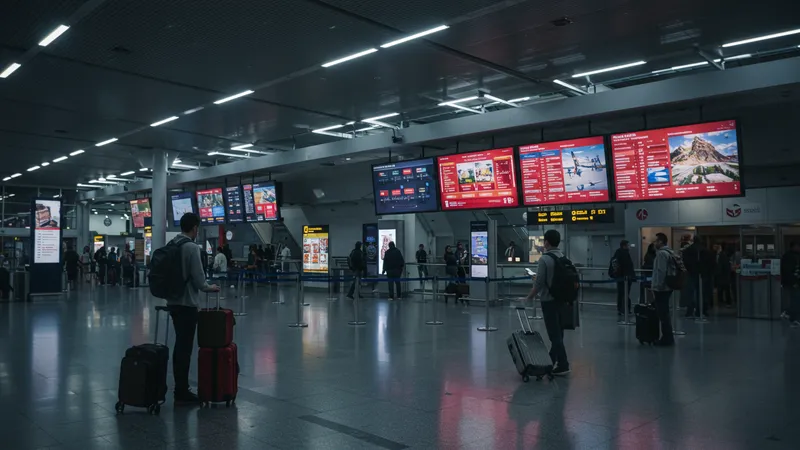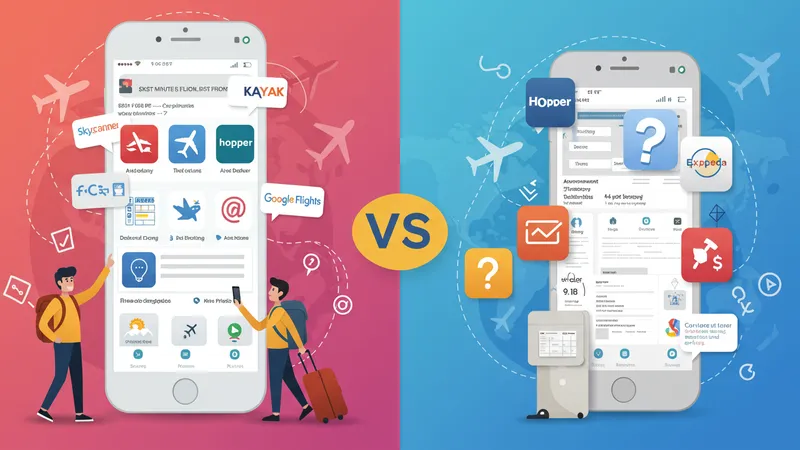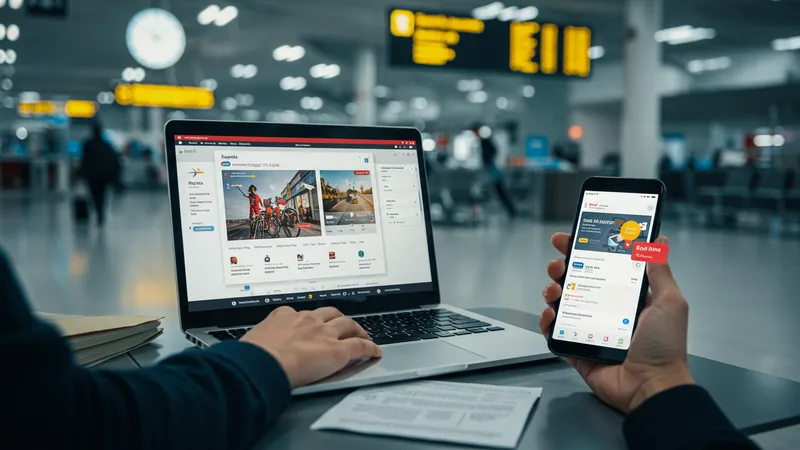

If you’ve ever needed to travel urgently, you know the challenge of finding accessible, affordable airfares at short notice. This is where the concept of last-minute flight deals booked online becomes crucial. Instead of missing out or paying sky-high prices, travelers can leverage specialized platforms and savvy online tools that aggregate unsold airline seats and last-minute fare drops. These deals offer flexible travel options without the stress and hassle traditionally associated with booking flights on short notice.
Platforms that cater to spontaneous booking use real-time data and exclusive airline partnerships to unlock fresh, discounted options minutes or hours before departure. Whether it’s a sudden business commitment or an impromptu weekend getaway, digital tools now put short-notice flights within reach, sidestepping many restrictions once attached to late bookings. This convenience, paired with visible competitive pricing, means travelers can still act on sudden plans without drastic expense.

Using these platforms, travelers benefit from a real-time view of airline seat inventory. Skyscanner and Google Flights are particularly effective at compiling vast ranges of flight data, displaying schedule changes and sudden price drops clearly. Kayak Explore’s map interface appeals to flexible adventurers, while Priceline Express Deals rewards those open to try new carriers for dramatic savings—a model that works only with adaptable plans.
Another differentiator among these services is predictive analytics. Hopper stands out by using algorithms to forecast price trends, warning users of imminent fare changes so they can act decisively. Platforms like Expedia and CheapAir leverage expansive partnerships, frequently rolling out exclusive deals not advertised elsewhere. This makes them attractive for those prioritizing savings and simplicity, even when booking mere hours before takeoff.
It’s important to consider the nuance between fully transparent deals (like Google Flights) and “opaque booking” models (like Priceline’s Express Deals or Hotwire). Opaque deals provide airline, timing, or connection details only after payment but can result in remarkable reductions that cater to price-driven travelers more than those demanding strict scheduling or loyalty miles.
Not all last-minute platforms are built alike. Some, such as lastminute.com, specialize in European routing and city connections, while others like JustFly push affordability by aggregating sources travelers might never browse individually. This divergence drives fierce innovation among flight deal providers, with each carving out a unique appeal to the modern, flexible traveler.
These options reflect just the surface of online last-minute flight capabilities. How do booking engines differ in terms of fees, refund policies, and success rates for urgent travel? The deeper details reveal even more valuable insights ahead…
Each last-minute flight deal platform distinguishes itself with unique search capabilities and booking flexibility. Skyscanner and Kayak, for instance, prioritize comprehensive coverage and real-time filtering, making it easy for users to scan a wide selection of available flights across numerous carriers. Others, such as Hopper and Priceline Express Deals, place emphasis on price prediction or secret fares, serving travelers who are either cost-driven or open to element of surprise in their journey.

One practical difference is the level of transparency offered. Google Flights and Expedia provide clear details about airlines, layovers, and final costs upfront. Conversely, Hotwire and Priceline Express Deals use opaque booking—meaning users commit to a purchase before learning certain specifics. This duality allows budget travelers to capitalize on additional savings if they’re comfortable with some uncertainty, while those with non-flexible requirements can stick with complete disclosure platforms.
Many platforms now offer integrated refund or cancellation filters, a particularly valuable feature for last-minute flights, where plans can change rapidly. Expedia and CheapAir, as examples, permit users to search exclusively for refundable or changeable tickets. This flexibility is balanced against price, so discerning users must weigh cost savings versus peace of mind when making final selections among rapidly shifting offers.
It’s also notable how algorithms enhance deal discovery. Hopper, known for predictive analytics, alerts users when fares are likeliest to drop, sometimes just hours before departure. This innovation represents a technological leap from static booking lists—creating a user-friendly, data-driven way to catch fleeting bargains unavailable through direct airline browsing. As booking windows shrink and supply fluctuates, choosing the right platform for your travel personality is increasingly important.
The core advantage of booking last-minute flights online is the ability to instantly access variable pricing and unsold inventory. By aggregating countless flight options, platforms like Skyscanner and CheapAir empower users to react quickly to schedule changes or sudden travel needs. This speed was once unimaginable through traditional channels, where last-minute often meant either exorbitant fees or complete sellouts.

Another notable benefit is the opportunity to discover alternate routings. Platforms such as Kayak Explore and Google Flights allow users to visualize wide-ranging route possibilities and flexibly adjust dates, unlocking combinations that may yield even lower fares or more convenient layovers. This adaptability can turn a stressful deadline into a creative travel puzzle, rewarding open-minded flyers with surprising itineraries.
Online tools also increase transparency in pricing by providing side-by-side comparisons. Expedia’s dedicated last-minute travel section and Hotwire’s discount model make it easy to spot genuine deals versus nominal markdowns. The information-rich interface of sites like Skyscanner reduces the chance of missing better fares due to scattered searching or time constraints, making smart decision-making more accessible to all travelers.
Finally, these platforms often negotiate exclusive discounts through bulk partnerships and pre-arranged allocations. Priceline and lastminute.com, for example, may receive seats airlines are eager to fill close to departure time—translating to extra value for users. The combination of choice, speed, and pricing already sets online last-minute booking apart as an indispensable resource for today’s dynamic traveler.
Travelers hoping to extract the most value from last-minute booking platforms should incorporate specific tactics aligned with platform strengths. First, flexibility is key. Adjusting departure times, airports, or even destinations—possible on Kayak Explore’s map or Google Flights’ search—can reveal significant price dips that occur when less popular flights still have availability.

Watching for predictive price changes is another effective method. Hopper users, for example, can set alerts for sudden fare drops or time-limited deals, enabling decisive action when discounts emerge. Booking during off-peak times or mid-week periods also increases the odds of catching inventory markdowns as airlines scramble to fill remaining seats before departure.
Embracing “opaque” options—such as Priceline Express Deals or Hotwire—can offer drastic fare reductions if you’re unconcerned with knowing exact flight details beforehand. These deals harness airlines’ willingness to discount unsold tickets without undermining their regular pricing. Risk-tolerant travelers stand to unlock the steepest savings here, especially when journey details are secondary to overall cost.
Lastly, always check refund and change policies, especially for urgent or unpredictable travel needs. Platforms like CheapAir and Expedia showcase which last-minute flights allow adjustments. Balancing price, flexibility, and transparency on these online tools continues to be the most effective route for those seeking comfort in last-minute journeys.
The final minutes before travel demand quick, responsive assistance. Platforms such as Expedia and Skyscanner stand out for their multi-channel customer service, offering live chat and phone support to help travelers resolve issues or clarify booking details swiftly. This is especially reassuring when every moment counts in securing a seat or updating accommodations.

User experience is about more than just finding the lowest fare. Kayak and Google Flights, with intuitive interfaces and real-time notifications, ensure users aren’t overwhelmed by complexity during expedited searches. These sites allow direct filtering by timing, layovers, or refund status, helping travelers rapidly refine choices even under time pressure.
Hotwire and Priceline Express Deals, despite offering “blind booking,” maintain reliable customer support for refund requests and post-booking changes. Their support resources become invaluable for users who embrace risk for savings but might occasionally need quick recourse in case of sudden disruptions or last-minute changes.
Ultimately, the digital transformation of urgent travel is defined by both platform innovation and the evolving expectations of travelers themselves. As online booking tools keep advancing in speed, transparency, and assistance, the stress once associated with impromptu travel is gradually giving way to new confidence and reliable convenience.